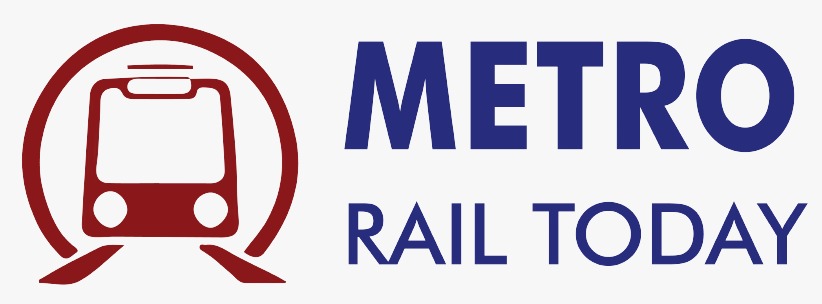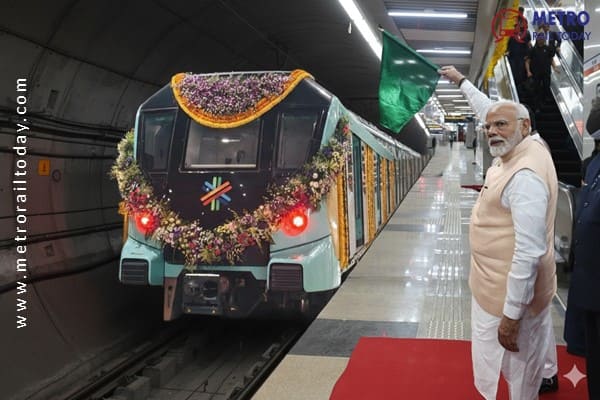 India's Rail & Metro Year-End Review 2025: A Year of Accelerated Execution and Visible Outcomes
India's Rail & Metro Year-End Review 2025: A Year of Accelerated Execution and Visible Outcomes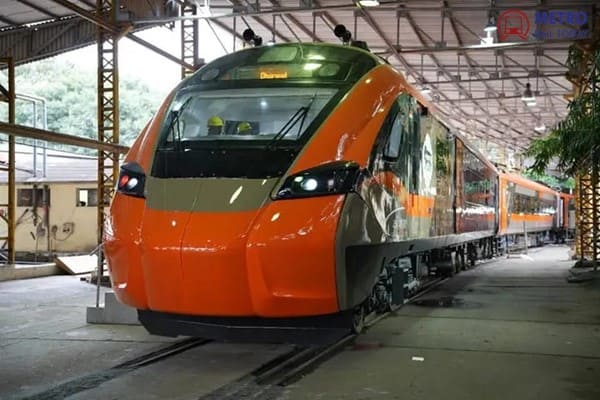 Indian Railways plans to manufacture eight additional sleeper rakes by March 2026
Indian Railways plans to manufacture eight additional sleeper rakes by March 2026 BEML sets timeline for production of high speed trainsets for India's first Bullet Train project
BEML sets timeline for production of high speed trainsets for India's first Bullet Train project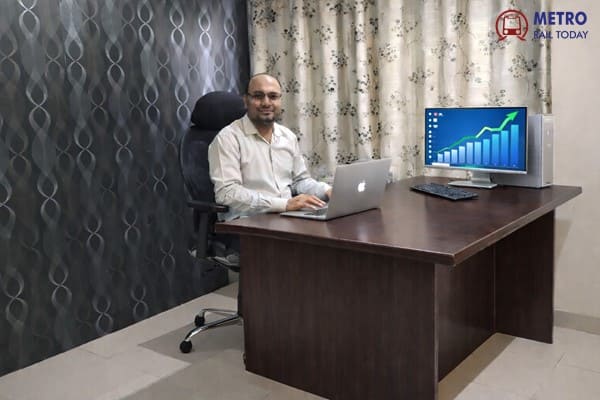 Dr. Vinod Shah appointed First Director General of the Chamber of Railway Industries
Dr. Vinod Shah appointed First Director General of the Chamber of Railway Industries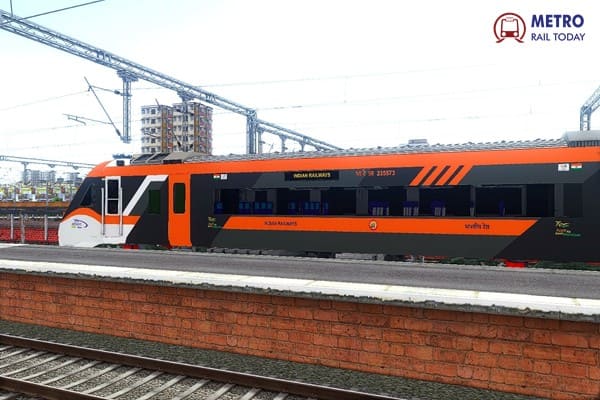 Indian Railways to run Namo Bharat Rapid Rail connecting Indore and Ujjain ahead of Simhastha 2028
Indian Railways to run Namo Bharat Rapid Rail connecting Indore and Ujjain ahead of Simhastha 2028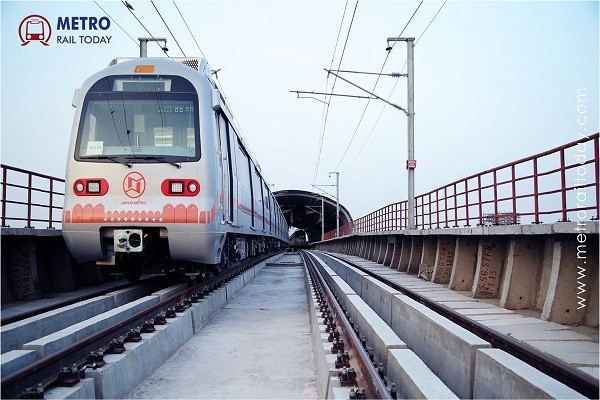 Jaipur Metro Phase 2 to link Airport Terminals, Promise faster Travel and stronger City connectivity
Jaipur Metro Phase 2 to link Airport Terminals, Promise faster Travel and stronger City connectivity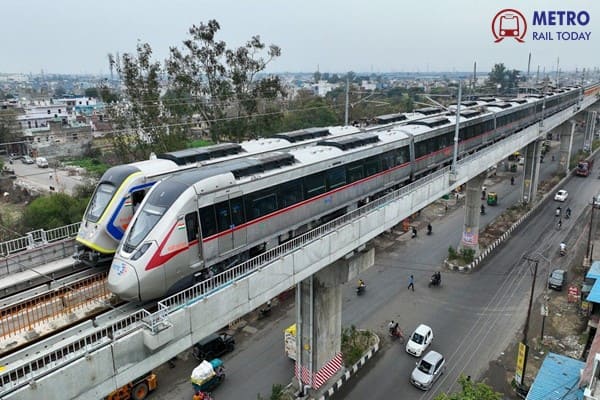 HMRTC proposes shared RRTS and Metro operations on Gurugram–Faridabad Metro corridor
HMRTC proposes shared RRTS and Metro operations on Gurugram–Faridabad Metro corridor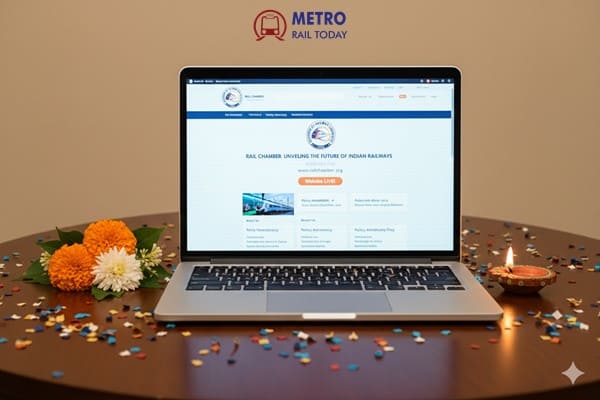 India launches Chamber of Railway Industries (Rail Chamber) on Good Governance Day
India launches Chamber of Railway Industries (Rail Chamber) on Good Governance Day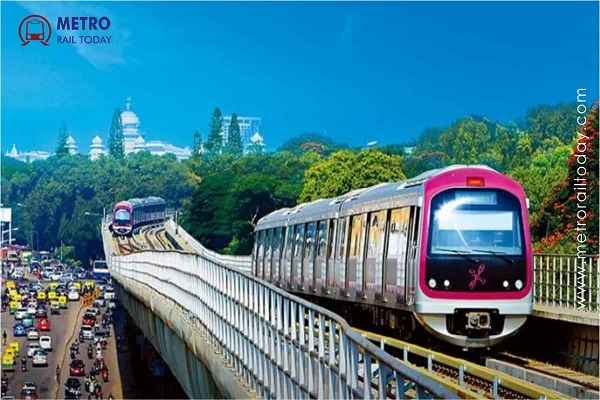 Bangalore Metro network gears up to grow from its current 96 km to 466 km by 2035
Bangalore Metro network gears up to grow from its current 96 km to 466 km by 2035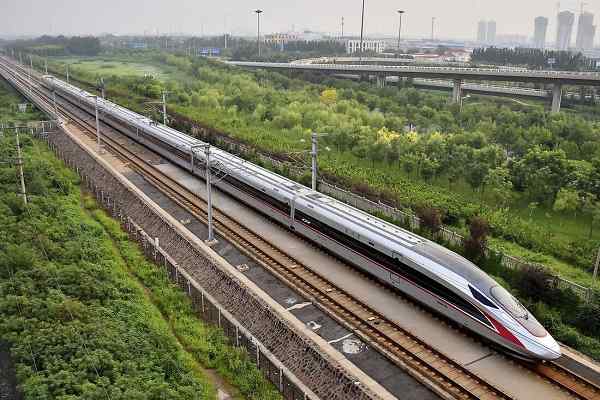 South Korea unveils EMU-370, Set to come World’s Second Fastest High-Speed Train
South Korea unveils EMU-370, Set to come World’s Second Fastest High-Speed Train
How Sreedharan's leadership transformed Delhi Metro Rail Project as a Role Modal?
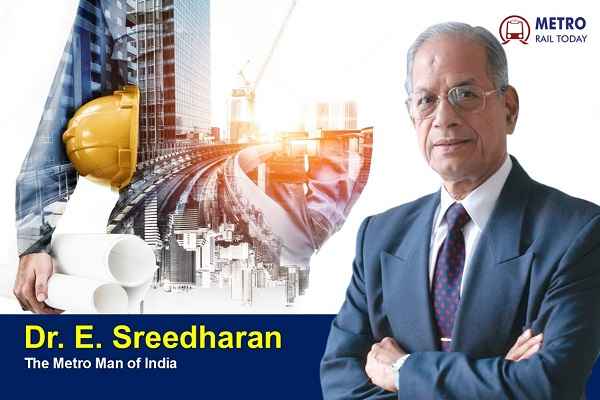
Dr. E. Sreedharan, widely known as the "Metro Man of India," is a name synonymous with urban transformation and infrastructure excellence. His visionary leadership and methodical approach were central to the success of the Delhi Metro Rail project, one of India’s most ambitious and complex urban transport initiatives. With meticulous planning, cutting-edge engineering, and an unwavering commitment to quality, Dr. Sreedharan delivered a project that has not only revolutionized urban mobility in Delhi but also set new benchmarks for large-scale infrastructure development across the country.
This article explores the core strategies that Dr. Sreedharan employed to bring the Delhi Metro project to life—strategies that were as scientifically rigorous as they were strategically astute. From detailed planning and advanced engineering techniques to sustainable practices and workforce management, Dr. Sreedharan’s approach offers valuable lessons in efficient project execution.
Detailed Planning and Phased Execution: A Blueprint for Success
A project of such magnitude demands comprehensive planning, and Dr. Sreedharan’s meticulous approach to project management ensured that every phase was carefully orchestrated for optimal results.
Scientific Phasing: Breaking Down Complexity
The Delhi Metro project was divided into multiple phases, each with distinct objectives, timelines, and budgets. This phased approach allowed for incremental progress while ensuring that the project stayed on track and within budget. By structuring the project into manageable segments, Dr. Sreedharan ensured that the team could focus on one task at a time, making it easier to address challenges without overwhelming the resources.
Route Optimization: Efficiency at Its Core
One of the most significant challenges in planning a metro system in a dense, fast-growing city like Delhi was determining the optimal routes. The team carried out extensive demand analysis to identify high-traffic corridors, while also considering factors such as population density, existing infrastructure, and environmental impact. This strategic route optimization reduced travel times, minimized property displacement, and made the metro system highly accessible to a larger section of the population.
Strict Deadlines: Accountability and Precision
Timely execution was a cornerstone of Dr. Sreedharan’s leadership. A clear and detailed project roadmap, complete with strict deadlines, ensured that every stakeholder—ranging from contractors to engineers—was aligned with the project’s goals. This framework of accountability kept the project on schedule, fostering a sense of urgency and focus across the board.
Engineering Precision: Mastering Complex Challenges
Building a metro system in a city as diverse in its soil and geological conditions as Delhi required cutting-edge engineering expertise. Dr. Sreedharan’s team relied on precision engineering methods to navigate these challenges.
Soil and Geotechnical Analysis: Reducing Risks
Comprehensive soil testing and geotechnical analysis were essential in selecting the right type of Tunnel Boring Machines (TBMs) for the project. By understanding the geological conditions, the team was able to choose the most appropriate TBMs that could handle both the rocky terrains and loose soil conditions found in Delhi’s varied landscape. This scientific approach minimized risks and ensured that the tunnels could be bored efficiently and safely.
Advanced TBM Technology: Leading the Way in Innovation
The use of closed-face Tunnel Boring Machines (TBMs) was a significant technical decision. These TBMs were chosen for their ability to work in a range of soil conditions, particularly in urban areas where tunneling through dense, inhabited zones was a logistical challenge. The advanced TBM technology not only improved operational efficiency but also reduced the risk of soil collapse during tunnel construction.
Integrated Station Design: Improving Network Connectivity
The design of metro stations was another hallmark of Dr. Sreedharan’s forward-thinking approach. Stations were not just designed for functional use but also to enhance connectivity with other modes of transportation, such as buses and suburban rail systems. This seamless integration improved the overall efficiency of the metro network, creating a truly interconnected urban transit system.
Scientific Project Management: Tools and Techniques for Efficiency
Dr. Sreedharan’s team embraced scientific project management tools that helped optimize timelines, resources, and project execution.
Use of CPM and PERT: Keeping Track of Progress
Critical Path Method (CPM) and Program Evaluation Review Technique (PERT) were integral to the project’s management. These tools allowed the project team to optimize scheduling and monitor the progress of each task in real time. By evaluating task dependencies and potential bottlenecks, CPM and PERT helped the team anticipate delays and adjust resources accordingly, ensuring that the project remained on schedule.
Real-Time Monitoring: Staying Ahead of Challenges
Real-time monitoring of project milestones was crucial to maintaining momentum. This approach allowed for the early identification of problems—be it delays, budget overruns, or technical issues—so that corrective actions could be taken swiftly. Through continuous tracking, the project was kept on course, preventing costly disruptions.
Proactive Risk Management: A Safety Net for Uncertainties
Risk management was a key aspect of the Delhi Metro project. The project team was well-prepared for unforeseen challenges, such as geological issues, unexpected water ingress, or equipment malfunctions. Detailed risk assessments and contingency plans ensured that the project could absorb shocks and remain on track.
Commitment to Quality and Safety
The safety of workers and passengers, as well as the long-term durability of the metro system, were of utmost importance to Dr. Sreedharan.
Stringent Safety Protocols: Protecting Lives
Safety was a non-negotiable priority throughout the project. Regular inspections, stringent safety standards, and frequent safety drills were implemented to protect workers and minimize accidents. Dr. Sreedharan’s leadership ensured that every team member adhered to these protocols, making the metro construction one of the safest large-scale infrastructure projects in India.
Quality Testing: Building to Last
Quality control measures, including rigorous testing of construction materials, were key to ensuring that the metro system would stand the test of time. Every material used in the construction—from steel reinforcements to concrete—underwent comprehensive testing for durability and compliance with safety standards, ensuring the long-term reliability of the metro infrastructure.
Noise and Vibration Control: Minimizing Disruption
Given the dense population and proximity to residential and commercial areas, controlling noise and vibration was critical. Advanced techniques were used to minimize noise and vibrations during construction, particularly in sensitive areas. These measures ensured that the metro project caused minimal disruption to the daily lives of Delhi's residents.
Innovative Financial Structuring: Managing Costs Without Compromising Quality
The financial structuring of the Delhi Metro project was a crucial element in its success. Dr. Sreedharan’s team employed innovative strategies to keep costs under control while maintaining high standards of quality and efficiency.
Multi-Source Funding: Securing Financial Support
A key factor in the project’s success was the innovative approach to financing. Dr. Sreedharan secured funding from multiple sources, including Japanese Official Development Assistance (ODA) loans. This diversified funding model helped mitigate financial risks and kept costs manageable, preventing the project from becoming overly reliant on any one funding source.
Cost Optimization: Every Rupee Counts
Cost efficiency was a top priority, and every phase of the project was carefully analyzed for cost-saving opportunities without compromising quality. This focus on cost optimization allowed the project to stay within budget and avoid the cost overruns that often plague large infrastructure projects.
Workforce Efficiency and Motivation: Leading by Example
The success of any project is largely dependent on the dedication and efficiency of the workforce, and Dr. Sreedharan understood the importance of a motivated, well-trained team.
Intensive Training: Skill Development at Its Best
Workers on the Delhi Metro project were given intensive training in safety protocols, operational procedures, and technical skills. This not only ensured that the workforce was competent but also contributed to a culture of excellence and efficiency.
Clear Accountability: Ensuring Transparency
Every team member had a clearly defined role, and accountability was emphasized at every level. This structure improved transparency, reduced delays, and ensured that all tasks were completed on schedule.
Leadership by Example: Inspiring Dedication
Dr. Sreedharan’s disciplined and punctual leadership set a high standard for the entire team. His personal commitment to excellence motivated workers and ensured that they remained focused on delivering the project to the highest standards.
Environmental Sustainability: Minimizing Impact on Delhi's Green Spaces
Dr. Sreedharan’s team was deeply committed to minimizing the environmental impact of the project. The Delhi Metro project was designed with sustainability in mind, incorporating eco-friendly practices that reduced its carbon footprint.
Eco-Friendly Practices: Sustainable Design and Construction
The project employed eco-friendly practices such as energy-efficient lighting and regenerative braking systems to reduce energy consumption. Additionally, efforts were made to minimize tree cutting and reduce the environmental disruption caused by construction activities.
Waste Control: Managing Construction Impact
Waste management was also a critical aspect of the project. Through careful planning, construction debris and dust were effectively managed, minimizing disruption to local communities and keeping Delhi’s air quality intact.
Public Communication and Stakeholder Engagement: Keeping the Public Informed
One of the key factors in the Delhi Metro’s success was Dr. Sreedharan’s commitment to transparent communication with the public and stakeholders.
Community Involvement: Managing Expectations
Open communication with local communities ensured that residents were well-informed about construction schedules and potential disruptions. Regular public updates helped manage expectations and fostered goodwill among Delhi’s citizens.
Transparent Reporting: Building Trust
Regular progress reports and updates on the project kept stakeholders informed and engaged. This transparency built trust and helped generate public support for the metro system.
Urban Infrastructure Development
Dr. E. Sreedharan’s leadership of the Delhi Metro project has left an indelible mark on India's urban infrastructure landscape. His meticulous approach, rooted in scientific principles and strategic foresight, not only transformed Delhi's public transportation but also set a gold standard for infrastructure projects across India and globally.
The Delhi Metro is more than just a transport system; it is a symbol of what can be achieved when visionary leadership meets disciplined execution. By combining cutting-edge engineering, rigorous planning, a strong commitment to safety, and environmental sustainability, Dr. Sreedharan and his team created a world-class metro system that continues to shape Delhi’s growth and urban mobility for generations to come.
A Blueprint for Future Infrastructure Projects
The principles behind the success of the Delhi Metro serve as a valuable blueprint for other cities and countries looking to develop similar infrastructure projects. The combination of scientific planning, technological innovation, financial prudence, and proactive risk management can be applied to a wide range of large-scale public works, from urban transit systems to water supply projects, smart cities, and beyond.
The Ongoing Impact of the Delhi Metro
Today, the Delhi Metro stands as a vital part of the capital’s transport network, reducing traffic congestion, cutting down pollution, and offering a sustainable alternative to traditional modes of transport. With plans for expansion, including new lines and upgrades, the metro continues to evolve and improve, helping Delhi navigate the challenges of rapid urbanization.
Moreover, the Delhi Metro’s success story has inspired other metro systems across India, from Mumbai to Bangalore and Kolkata, to adopt similar methodologies for efficient execution and quality service delivery. Dr. Sreedharan’s leadership, coupled with his commitment to excellence, serves as a guiding light for engineers, urban planners, and policymakers.
Legacy of Dr. Sreedharan: The "Metro Man"
Dr. Sreedharan’s contribution to India’s infrastructure development goes beyond the Delhi Metro. His leadership on the Kochi Metro and the Kolkata Metro also earned him widespread admiration. What sets him apart is his insistence on discipline, accountability, and the constant drive to overcome challenges.
Often described as the "Metro Man," his work demonstrates that large-scale infrastructure projects are not only about technical expertise but also about leadership that fosters collaboration, encourages innovation, and inspires dedication.
Conclusion: India’s Urban Future
The Delhi Metro stands as a testament to what is possible when a dedicated team, led by a visionary leader, works with unwavering commitment to a common goal. Dr. Sreedharan’s leadership, scientific approach, and legacy continue to inspire new generations of urban planners, engineers, and leaders across the globe. As India’s cities continue to grow, the lessons learned from the Delhi Metro project will undoubtedly play a pivotal role in shaping a future where efficient, sustainable, and accessible public transportation systems become the norm rather than the exception.
By continuing to apply these strategies—scientific planning, technological innovation, strong project management, and a focus on quality and sustainability—the blueprint laid out by Dr. Sreedharan can help transform cities into more efficient, connected, and livable spaces for generations to come.
Key Takeaways
- Meticulous Planning: Every phase of the Delhi Metro project was carefully planned with clear timelines, budgets, and goals to ensure that the project stayed on track.
- Advanced Engineering: The use of innovative technologies, such as advanced TBM machinery, was crucial to navigating Delhi’s challenging geological conditions.
- Scientific Project Management: Tools like CPM and PERT were used to optimize task execution, monitor progress, and mitigate risks effectively.
- Commitment to Safety and Quality: Dr. Sreedharan’s emphasis on safety, quality control, and sustainable practices ensured that the project not only met its objectives but also adhered to the highest standards.
- Community Engagement: Transparent communication and involvement with local communities helped manage public expectations and minimize disruptions during construction.
- Innovative Financing: Multi-source funding, including international loans, ensured the financial feasibility of the project while optimizing costs.
Dr. E. Sreedharan’s leadership on the Delhi Metro project has proven that large-scale urban infrastructure projects can be completed efficiently, with minimal environmental disruption, and within the constraints of tight budgets. As India continues to evolve, the Delhi Metro will remain a shining example of what can be achieved with the right vision, expertise, and leadership.
